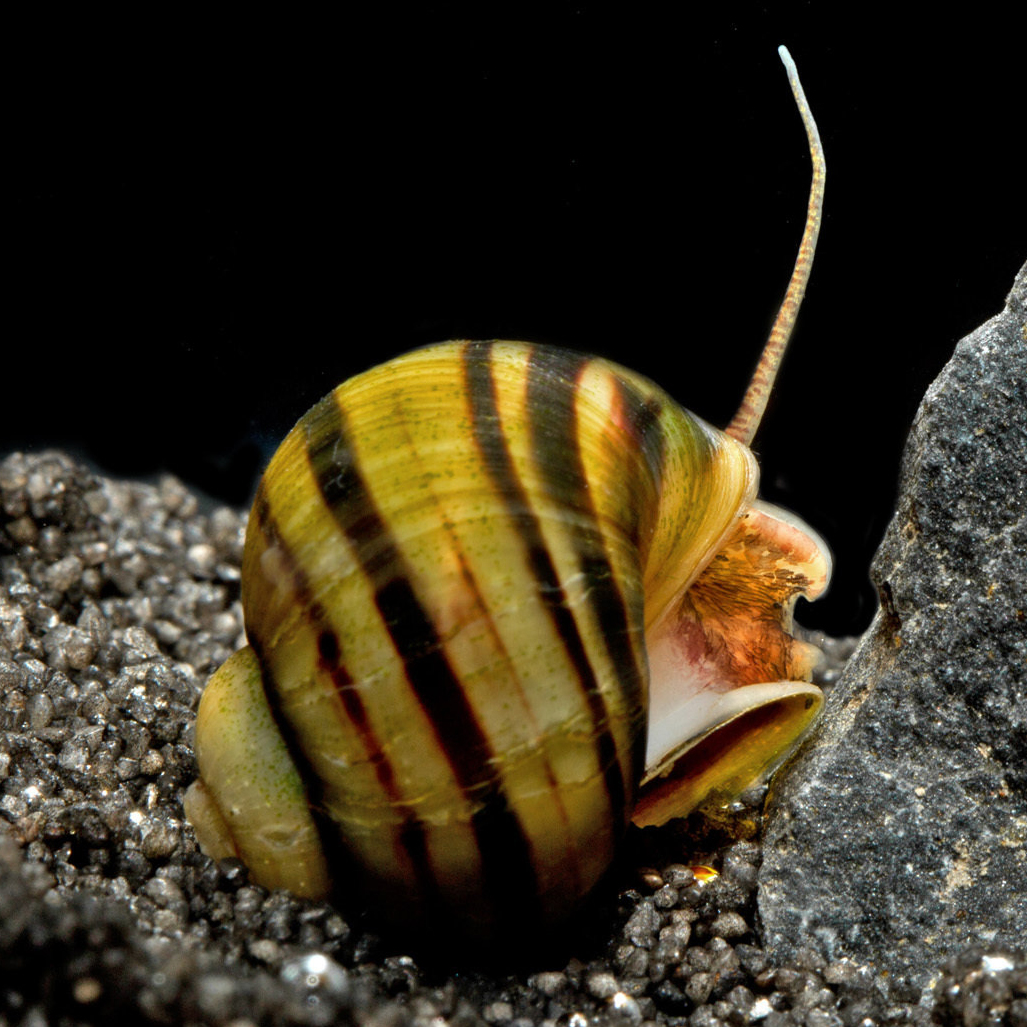Zebra Apple Snail
Asolene spixi
The Zebra Apple Snail is a pretty aquarium snail that is particularly noticeable because of its striped shell.
- pretty freshwater snail
- yellow and black housing
- good leftover eater
1 in stock
 Delivery in a few working days
Delivery in a few working days
 Free shipping from €60 across Austria
Free shipping from €60 across Austria





Important data
Product description & details
Asolene spixi, also known as the Zebra Apple Snail or Spixi Snail, is a South American freshwater snail found in stagnant and flowing waters in Brazil. The twisted and slightly tapered shell of this apple snail can reach a size of around 4 cm and has a yellow base color with dark brown to black stripes. The snail’s foot color is cream-colored and can sometimes be mottled brown to gray. In contrast to apple snails of the genus Pomacea, Asolene spixi is not affected by the EU ban and can continue to be kept and bred.
Care in the aquarium
The Zebra Apple Snail is relatively easy and uncomplicated to care for. The aquarium should hold at least 30 liters and be designed so that the snail cannot get stuck in any niches. We recommend a soft substrate such as sand, soil or fine gravel, as the Zebra Apple Snail also likes to burrow itself in. As with most species of snails, medium to hard water is ideal, as the shell can be damaged if the water is too soft. The water should also have a temperature between 20 and 28°C, be clean and free of ammonia and nitrite, as Asolene spixi is sensitive to these. We also recommend covering the aquarium so that the Zebra Apple Snail cannot accidentally climb out of it. It should be noted that this apple snail draws air through a siphon (“breathing tube”) on the surface of the water and therefore there must be a small distance between the water and the cover. This absolutely peaceful snail can easily be socialized with aquarium animals that do not chase it or pluck at it.
Feeding
As a classic recycler of leftovers, the Zebra Apple Snail feeds on biofilm and algae growth as well as detritus (dead plant material, carrion, leftover food). It can be fed a wide variety of commercially available snail and shrimp food, fish food, green food and leaves. If the apple snail does not receive enough green food, it can nibble on living plants with soft leaves, which is why it is less suitable for aquariums in which the plants are the focus – e.g. aquascapes. It can also be given frozen food every now and then. Especially in aquariums with rather soft water, we recommend giving food containing minerals to prevent damage to the housing.
Sexual characteristics and breeding
The Zebra Apple Snail has separate sexes, but the sexes are difficult to identify at a young age. When fully grown, male animals are slightly smaller and their feet are slimmer than those of female animals. The shell of males can also be a little more pointed than that of females. This type of snail lays its eggs under water on plants or other surfaces such as glass panes. These can be easily removed if necessary. The approximately 20-40 fully developed young snails hatch after about 2-3 weeks.





